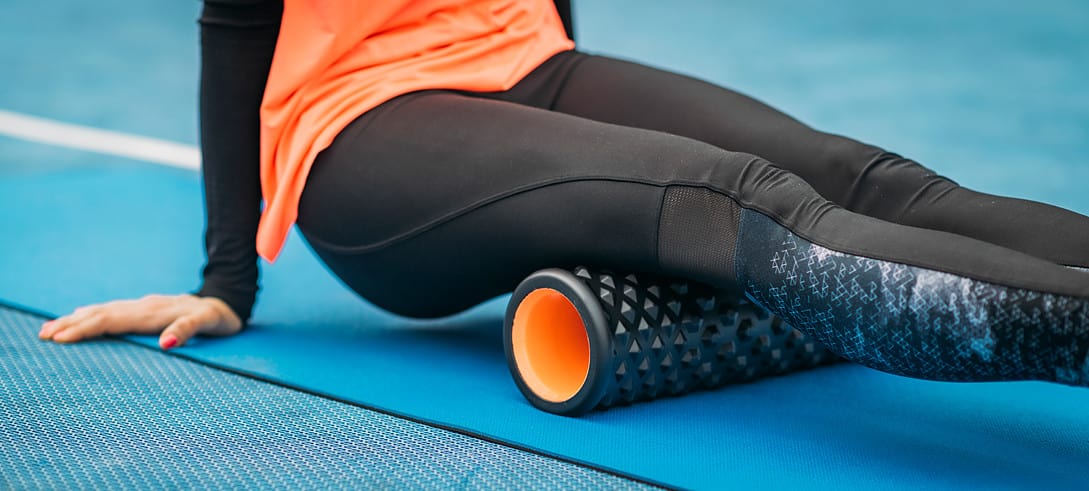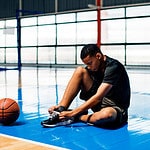Introduction
Foam rolling is a popular method of self-myofascial release (SMR). It can help rehabilitate knee ligaments. It can improve flexibility, reduce pain, and promote blood flow. Plus, it’s easy, safe and cost-effective.
This article will focus on the benefits of foam rolling for knee ligament rehabilitation, and how it helps with healing and recovery.
Overview of Foam Rolling
Foam rolling is a self-myofascial release technique that massages muscles. It breaks up adhesions and reduces soreness and tension. It works like massage, but without a pro. Benefits include increased flexibility, improved circulation, and muscle pain relief.
Athletes, dancers, and active people can use it to increase power and performance. Beginners and injury rehab patients can use it for safe healing and preventing future injuries.
It’s easy to start foam rolling. Get an appropriately sized roller and nursing supervision. Warm up with walking or dynamic stretches. Then roll each muscle group to loosen knots caused by tension or posture. This can prevent pain and restricted movement.
Benefits of Foam Rolling
Foam rolling is a great technique for athletes, those looking to improve physical performance, and those rehabilitating from an injury. It can help increase flexibility of the muscles surrounding the knee, as well as promote blood flow for healing.
Foam rolling is known for its therapeutic benefits. It reduces muscle tension, improves range of motion, increases balance and core-muscle activation, and improves circulation throughout the body. It can massage soft tissues like tendons, ligaments, and iliotibial band, as well as muscles like quads and hamstrings. It can also help with neck pain.
The key benefit of foam rolling lies in reducing tension around the knee joint. This helps reduce pain from overused or strained muscles, as well as strengthens weak muscles. Increasing the balance between opposing muscles groups in the legs also helps reduce the risk of further injury.
Foam rolling can provide relief from discomfort or soreness after following a physician’s/therapist’s orders. It helps nourish damaged tissue while preventing further damage due to increased mobility/flexibility. However, if you feel discomfort while foam rolling, stop immediately and consult your physician.
Foam Rolling for Knee Ligament Rehabilitation
Foam rolling is a popular form of self-myofascial release. It’s used for knee ligament pain, increased range of motion, reduced inflammation, and normal muscle function restoration. In this article, we’ll cover the various aspects of foam rolling and the potential advantages for those recovering from knee ligament injuries.
Types of Knee Ligament Injuries
Knee ligament injuries can be acute or chronic. Acute knee injuries are caused by a single traumatic event, such as a blow to the knee. This can result in sprains, ACL tears, PCL tears, and tears to the medial and lateral collateral ligaments.
Chronic knee injuries are due to overuse and are usually linked to activities that involve running, jumping, and cutting.
Foam rolling is an SMR technique that uses special foam rollers to increase blood flow and flexibility in injured tissues. It’s safe to use for knee injuries, including ACL and PCL tears, collateral torques, quadriceps tendonopathy, patellar tendonopathy, patellar subluxation, iliotibial band syndrome, and bursitis. Foam rolling can help reduce pain and improve functionality.
Foam Rolling Techniques for Knee Ligament Rehabilitation
Foam rolling is a form of self-myofascial release that can help ease knee injuries, inflammation, and limited movement. It helps improve flexibility, joint mobility, and tissue integrity.
When foam rolling the knees, it’s vital to go slow and gently roll over the tender area. Lie on a foam roller with it placed lengthwise under your thigh. It should be aligned with your knees and keep your leg straight for comfort. Engage your core and use your arms to move back and forth from your hip to just below the knee for 15-20 seconds. Use minimal pressure and relax when you hit an uncomfortable spot.
Other techniques include:
- Rotational movements (rolling up and down plus slow side-to-side movements).
- Cross friction massage (small circles above or below a painful spot). This should be used sparingly as it can cause more harm than good.
Foam rolling can help with knee ligament injuries. Always consult a doctor before beginning any exercise protocol and refer back regularly during each stage of rehabilitation.
Safety Considerations
Foam rolling is a type of massage that helps with flexibility, relaxation of muscle tension, and pain relief. It is usually safe to use, but certain safety measures must be kept in mind when it is used for the rehabilitation of knee ligaments.
Here are some of the safety considerations for using foam rolling for knee ligament rehab:
- Ensure that the foam roller is the right size and firmness for the user.
- Start with gentle pressure and increase pressure gradually.
- Avoid rolling over any bony areas or joints.
- Stop immediately if there is any pain or discomfort.
- Do not roll over any areas with existing injuries.
Proper Foam Rolling Techniques
Foam rolling is a great way to rehabilitate your knee ligaments. Remember to follow guidelines and take safety precautions when doing it. There are 4 primary components to proper foam rolling technique: preparation, active flexibility, static stretching, and foam rolling.
First, warm up your body with dynamic stretching or light aerobic activity for 5-10 minutes. This will increase your blood flow, heart rate and tissue temperature.
Next, do active flexibility exercises. These involve moving your limbs into a range of motion without causing pain. Doing this will help increase the range of motion in the joints around your knee joint and other lower extremity joints that affect gait mechanics (e.g., hips and ankles).
Static stretching exercises use sustained contractions in the end ranges of motion of larger muscle groups like the quadriceps, hamstrings, IT band, calf muscles or glutes. Do this for 15+ seconds with 2-3 repetitions on each side. Breathe steadily and don’t go over 30 seconds per exercise per side. You can also do this during foam roller use or after dynamic activities.
Finally, start foam rolling at a low intensity level that you can tolerate. Gradually increase it as tolerated. Make sure to do it pain-free and maintain proper posture/alignment.
Potential Risks and Side Effects
Coffee drinking can have potential risks. Mild problems are rare, but there can be serious health issues, depending on conditions and circumstances.
Caffeine has been linked to physical and psychological issues. Too much can cause sleeplessness, headaches, irritability, racing heart rate or high blood pressure. It’s best to consult a doctor before consuming coffee if you have high blood pressure or other medical conditions. Pregnant women should also be aware of the risks.
Most people can enjoy coffee without problems. But, it’s best to drink responsibly and moderately, to avoid any serious complications. And, remember to check the quality of your coffee for harmful chemicals like mold or bacteria.
Conclusion
Foam rolling is a great way to rehabilitate knee ligaments. It’s inexpensive and low risk. Studies have shown it reduces knee pain and swelling, increases range of motion and flexibility, builds up muscles and ligaments, helps restore normal movement and speeds up post-workout recovery. Plus it can be done in the comfort of your own home, making it a perfect rehab option for those who don’t have access to a gym or exercise equipment.
Summary of Foam Rolling Benefits
Foam rolling is a great self-myofascial release technique! It’s a safe form of knee ligament rehabilitation. It improves circulation in the area, lessening pain and accelerating recovery time. It also increases joint range of motion, relaxes muscles and increases flexibility.
Stretching and lengthening muscles with foam rolling reduces fatigue and soreness. It’s best done before physical activity or sport – allowing athletes to move with more range and less tension. As a post-workout cool-down, foam rolling reduces muscle soreness and increases flexibility.
Don’t substitute foam rolling for traditional physical therapy. However, it can be an effective supplement. With gradual progressions in intensity, this self-myofascial release can provide lasting results without additional expense or risk of injury due to improper use.
Recommendations for Further Research
Research on coffee roasting could focus on the differences between specialty light and dark roasts. This would help to determine how flavor notes are altered by different methods. Plus, research could explore the effect of roast color on the health benefits of coffee consumption.
Different coffee beans from various geographic origins have unique flavor profiles. More studies should explore how coffee production affects the final flavor perception.
Also, further study is needed to evaluate new approaches for keeping coffee fresh after roasting. Additionally, ways to extend roast shelf life should be explored:
- Evaluate new approaches for keeping coffee fresh after roasting.
- Explore ways to extend roast shelf life.
Frequently Asked Questions
Q1: Does foam rolling help with knee ligament rehabilitation?
Answer: Yes, foam rolling can be an effective and safe option for knee ligament rehabilitation. Regular foam rolling can help to improve flexibility and mobility in the knee, which can help to reduce the risk and severity of knee ligament injuries.
Q2: How often should I foam roll for knee ligament rehabilitation?
Answer: It is recommended to foam roll at least 2-3 times per week for knee ligament rehabilitation. You should foam roll for 5-10 minutes at a time, focusing on any areas of pain or tightness.
Q3: Are there any risks to using foam rolling for knee ligament rehabilitation?
Answer: Foam rolling is generally considered a safe and effective option for knee ligament rehabilitation. However, some people may experience discomfort or pain when foam rolling, and it is important to stop if this occurs.





